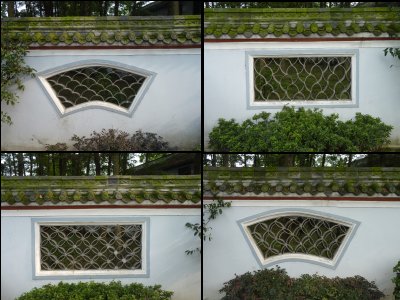
Before we get to the significance of that we walked through the gardens.
Just four panels with an imaginative (to me) use of roof tiles.
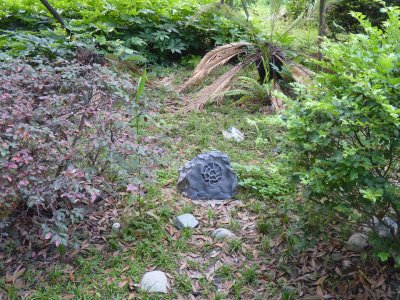
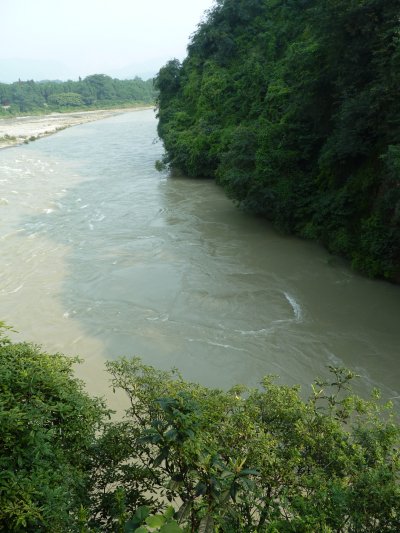
Li Beng became a bit fed up of the cycles of flood and drought. Obviously it was effecting his income from taxes as well as the mood of his people.
It was intriguing to me as I spent a lot of my time removing bottlenecks from systems. Li Beng introduced one.
The trapezoidal design provides sufficient water when most required but limits the flow during flood.
And the really clever bit is that the sand carried by the river gathers to the left of the photo rather than blocking channels downstream.
The irrigation system is alive and well today with more complex control gates upstream. For the techies, a wonderful example of "shunt control".
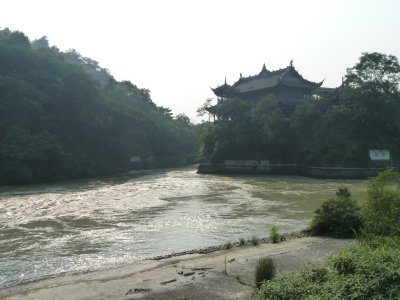
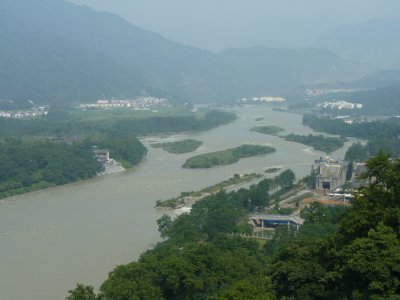
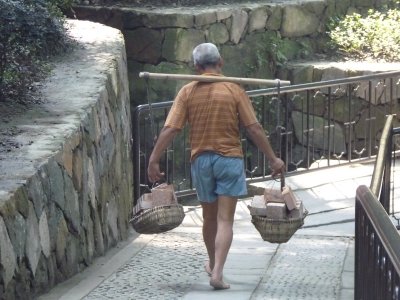
This struck us as a hard way to earn a living. The bricks are smaller than Western bricks but seemed more dense.
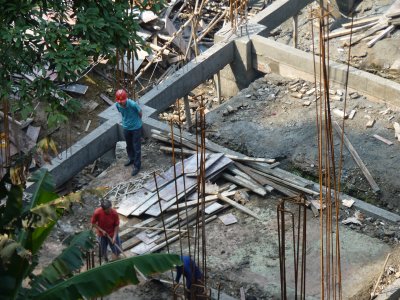
Some others had hats but not all and they were dusty.
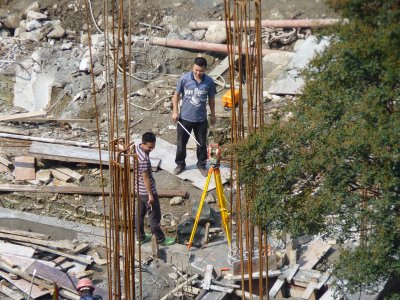
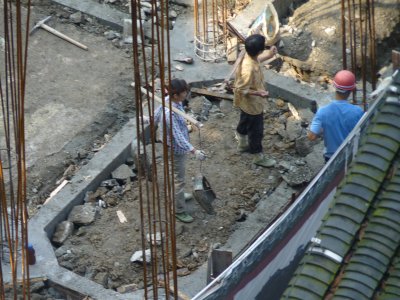
Unhook the empty ones and hook up the full ones.
Carry them away and bring them back empty.
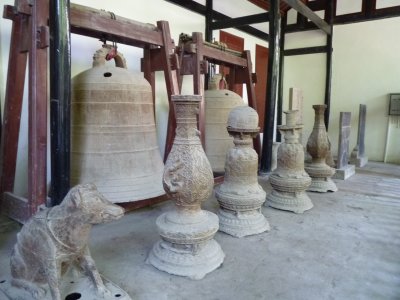
There were some bars between me and the bells so we didn't have a chance to hear the difference.
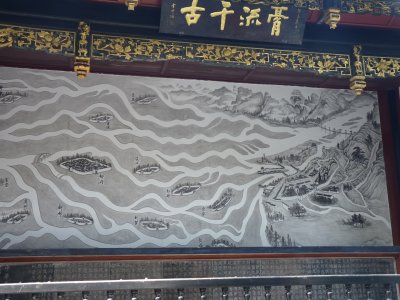
The control channel is the bottom one.
The original control was built from stones held together with bamboo.
Part of the system was a tax on bamboo which provided some control over how channels were built and maintained.
If I read it correctly when the tax was too high the system had a few failures.
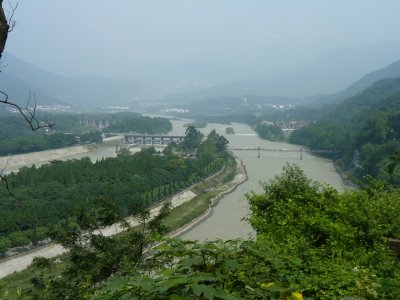
Built about 865 AD.
It helped protect the Western entrance to the Chengdu Plain.
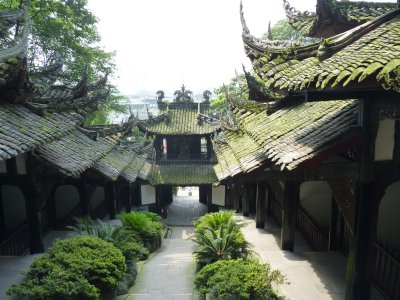
There was a series of paintings and descriptions down both sides which explained how Li Beng fought the dragon to tame the waters.
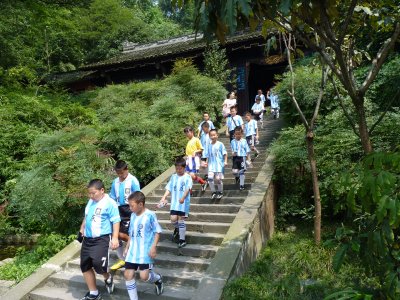
A bunch of well behaved primary school kids.
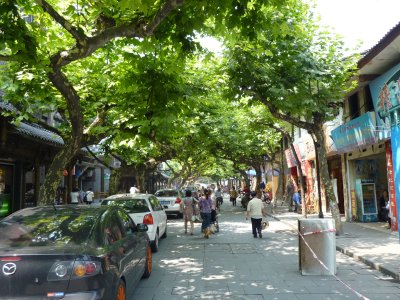
Lots of rebuilding still occurring after the earthquake.
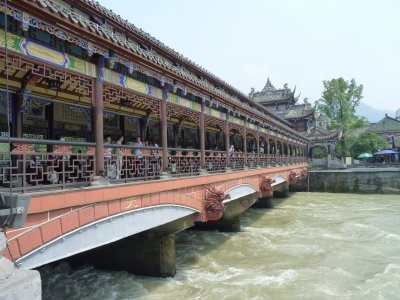
That's a lot of water flowing fast under it.
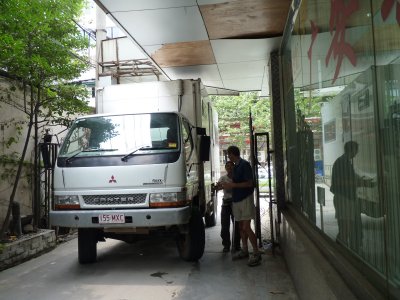
The bigger the city the harder to find a camp.
To get Tardis under the overhang we removed the exhaust.
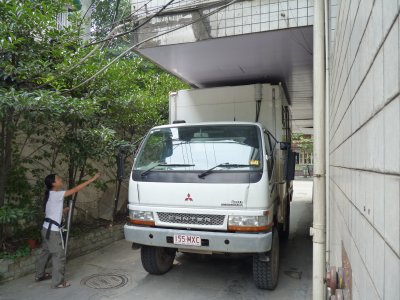
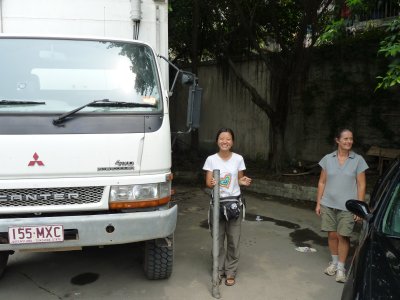
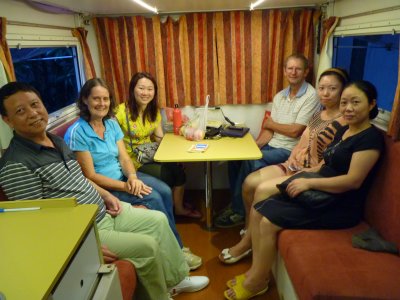
They all came back to our place to see what this mysterious car looked like.
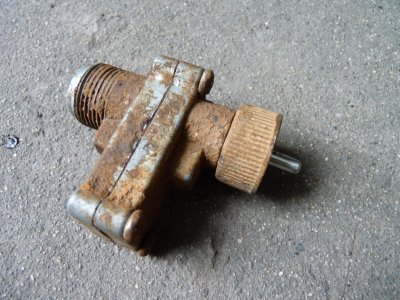
Ali and Susanna took some laundry to .... you guessed it ..... a Chinese laundry! (Didn't you always want to say that!).
I tackled the speedometer and a couple of other repairs.
This is the ratio adaptor from the speedo. Its a gearbox that compensates for the larger than normal tyres.
The inlet doesn't drive the outlet. At A$195 one would have expected some sort of bush rather than steel shaft directly in the casting. In my simple opinion it was just waiting to fail. The Aus supplier hasn't replied to email yet.
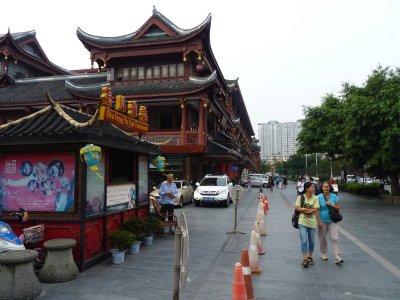
An up market street in the middle of Chengdu.

A Sichuan Hotpot.
Very nice food it was too.
The guide is provided by an agency. In our case Navo Tours.
There are also all sorts of permits required, customs to organise, insurance, driving licence and vehicle registration, and so on.
Susanna is with us 24x7. She stays in Tardis with us. Just our choice. Experience suggests inclusive is better than exclusive. Understanding the limitations (China is a large and diverse country) and potential is probably useful.
Strangely, its the first time in her guiding experience that she's sat in the front - I retained the middle seat when installing the suspension seats. Sleeping is one of the 2m long seat squabs.
So far so good. Its working well. Of course it depends on the people and how the situation is managed. If it wasn't working we'd find a way of making it work.
Given a choice we wouldn't have a guide. But we do understand that self driving through China is somewhat more challenging than other countries so far. Thus we make the most of having a guide.
Susanna's English is excellent. Expecting her to know the English names of some of the obscure fruit and vegetables is one step too far. Its definitely a plus when someone can say "I don't know" without perceptions of losing face!
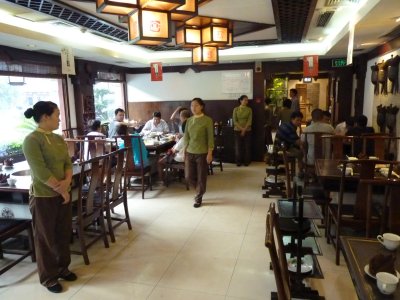
Perhaps time to mention that I can travel in style for short periods or normally for long periods.
I've done both (including first class around the world) and we have chosen the long slow way this time.
There's a small sense that we see a bit more of the local culture and less of the globalised hotel / restaurant / tourist bit.
Not averse to a bit of up market surroundings occasionally though.
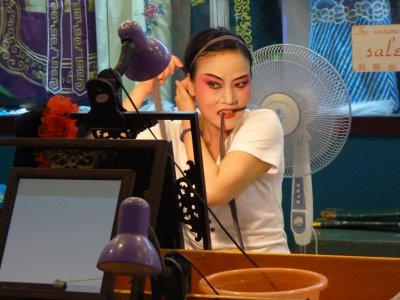
The performers were all accessible to the audience before and after the show.
Including photos with them on stage after the show (for 20 yuan).
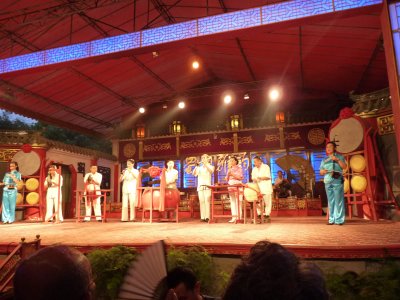
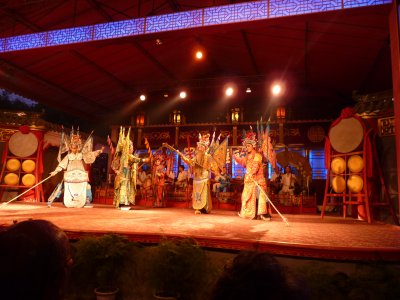
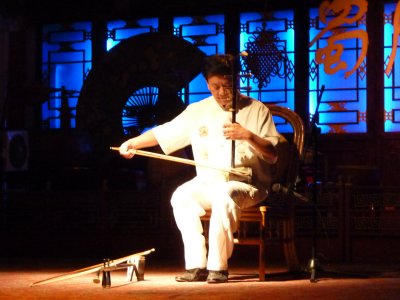
Sounded like a violin, but no bridge and no fingerboard.
A violin bow is pressed against the strings, this bow is pulled away from the strings (the strings are threaded through the middle of the bow).
Probably quite difficult to get a good tone from. This was a very good performance.
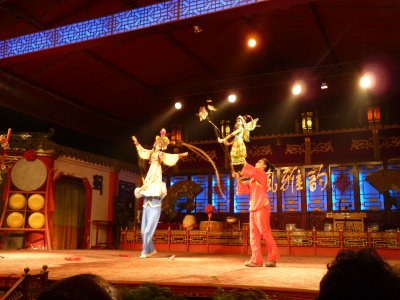
One hand underneath. One hand to control two sticks leading to the hands.
The hands were fully articulated. Various bits of cloth were picked up and twirled. Also flowers which were then placed in the hair.
More dextrous than I.
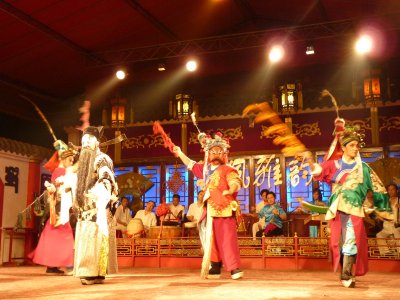
The guy in the middle looked particularly evil and imposing.